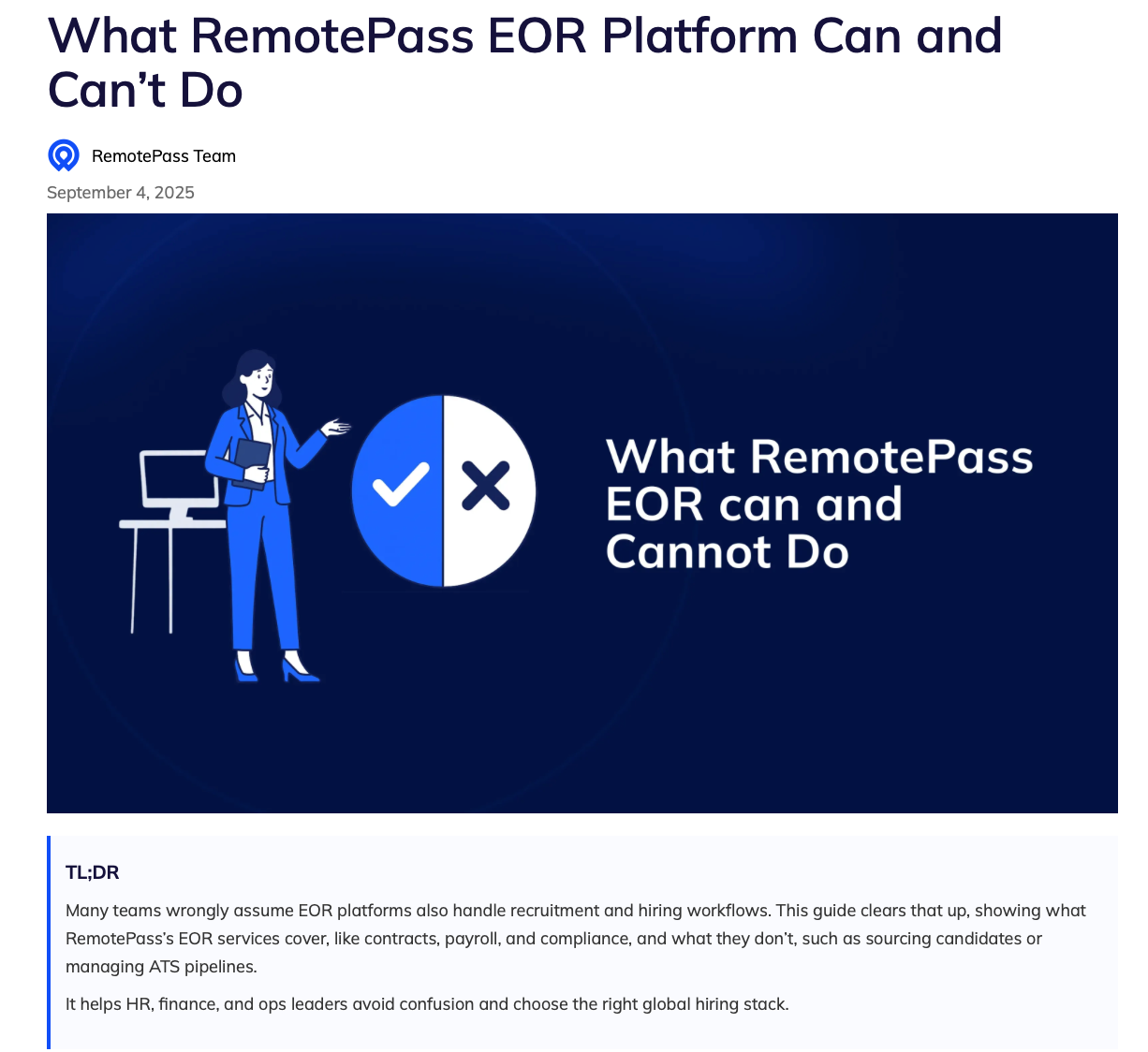Sales call notes, when captured consistently, are a goldmine of customer intelligence. Yet, most PMMs, myself included at one point, rarely use them beyond win/loss analysis.
And don’t get me wrong, those reports are valuable. But buried in those same notes are subtle objections, recurring points of confusion, and quiet hesitations that never make it into dashboards.
I learned this firsthand at RemotePass. Our sales and marketing teams were closely aligned via regular syncs. But even with that, SQL quality kept fluctuating. We had no shortage of data, yet we still lacked clarity on why deals were stalling or dropping off.
That gap — between data and understanding — became the problem to solve.
So, I partnered with our Sales Operations Manager to connect an AI tool (ChatGPT) to our CRM, HubSpot, using a lightweight API workflow. The goal was simple: automatically generate weekly reports that surfaced recurring objections, feature confusion, and emerging customer themes directly from sales notes.
That setup created a scalable feedback loop connecting Sales, Marketing, and Product. It took a few iterations to make it part of everyone’s weekly rhythm, but once the insights started proving useful, we saw clearer qualification patterns, fewer noisy leads, and more consistent SQL quality.

But as we soon learned, not all intel is worth chasing. Some were noise; others were high-impact signals. So we introduced a lightweight system to separate the two: the Collect → Validate → Act framework.
In this article, I’ll break down how that framework worked for us, what we learned, and how any PMM can use it to turn sales calls into actionable go-to-market intelligence.
The Collect → Validate → Act framework
The Collect → Validate → Act framework is a simple, process-driven approach used to turn scattered data into clear decisions. It’s common in continuous improvement models, but for us, it became the backbone of how we translated sales intel into business action.
Here’s how it played out:
Collect: Gather weekly signals
Once the setup was done, the real work began. Every Friday, ChatGPT automatically pulled notes, summaries, and key points from our HubSpot CRM. It picked up everything from competitor mentions to product confusion to unexpected ways customers were using our platform.
The first time I read through those summaries, I realized how much valuable context we’d been missing. Things Sales reps mentioned in passing, like a prospect struggling to differentiate our EOR model from staffing, suddenly became visible patterns.
I’d review the AI summaries, clean them up, and add context before sharing them with the right teams. Sometimes that meant highlighting an objection that needed a stronger Sales response. Other times, it was flagging a feature confusion for the Product team or surfacing a new use case that Marketing could explore.
Over time, this rhythm became a habit that made intel collection predictable, collaborative, and, most importantly, useful.
Validate: Apply the three filters
Interestingly, collecting intel was the easy part. The real challenge was figuring out which insights actually mattered. Not every comment from a prospect should trigger a campaign or a roadmap change. To stay disciplined, we created three simple filters:
- Frequency: Is this a one-time comment, or are we hearing it again and again? One call can mislead you, but if five prospects bring up the same concern, it’s a signal.
- Value Impact: Would solving this issue move the needle? Some blockers are nice-to-fix, but others directly affect SQL conversion or deal velocity. We learned to focus on the latter.
- Fit: Who should act on this? Some insights call for a messaging tweak from the PMM team. Others belong to Product. Clarifying ownership early kept us from chasing every shiny piece of feedback.
Applying these filters turned our process from a reactive scramble into a focused system where only the most valuable insights made it to the next stage.
Act: Address only what’s validated
Once an insight passed all three filters, we moved into ruthless prioritization and execution. The goal was simple: act only on what had clear, validated value.
One pattern that stood out early was the number of prospects asking for a time-tracking feature. It was already on the product roadmap, but now we had data showing it was a consistent request across regions and deal sizes. Product fast-tracked its development, and Sales had a clearer narrative around it.
On the marketing side, a bigger issue surfaced. Many prospects assumed we offered recruitment services, which wasn’t true. It turned out this misunderstanding was one of the biggest reasons SQLs were dropping off. The pattern checked all three boxes:
- It was a recurring trend.
- Fixing it could directly improve SQL rate and deal velocity.
- It required a PMM-led solution, not a Product fix.
We responded quickly. The PMM team created a focused sales enablement document and an article clearly explaining what our EOR model does (and doesn’t) cover.

The result was immediate and measurable. SQL quality improved noticeably because leads were now coming in pre-qualified and aligned with our actual value proposition. The small act of clarifying our story turned confusion into confidence and confidence into conversions.
Want to try this system? Here’s what to keep in mind
Start with a strong prompt
The quality of your insights depends on how well you guide the AI. Our prompt was intentionally specific: it asked ChatGPT to extract recurring objections, feature confusion, and competitor mentions, then summarize them into actionable insights.
Here’s an example you can use or adapt:
“Summarize recurring objections, questions, and confusion points from this week’s sales call notes. Highlight patterns that could inform Sales enablement, Product decisions, or Marketing messaging.”
Review before you validate
Don’t take AI output at face value. Scan through the notes yourself to ensure the context is accurate before deciding what’s worth validating.
Move fast on urgent blockers
If an insight points to something that’s actively hurting conversions, act quickly. The longer it lingers, the more deals you risk losing.
Keep a steady cadence
We found Fridays worked best because the team had fewer meetings and more time to reflect. That made it easier for everyone to review insights and take action. Pick a schedule that fits your team’s workflow and stick with it. The more consistent you are, the more valuable the process becomes over time.
Measure the before and after
Always track how your actions influence key metrics like SQL quality, deal velocity, or conversion rate. Otherwise, it’s hard to prove (or improve) the system’s value.
Loop in cross-functional partners early
Bring Sales Ops, Product, and Marketing into the process from day one. This ensures shared ownership of insights and faster execution once patterns are identified.
Document as you go
Keep a simple running log of validated insights, actions taken, and the outcomes. Over time, this becomes a knowledge base your team can revisit instead of starting from scratch each quarter.
Treat it as a living system, not a one-time project
Customer behavior evolves, and so should your feedback loop. Keep refining prompts, validation criteria, and reporting style as your product and market mature.
Sales calls are one of the richest sources of truth in any go-to-market motion. When paired with structure, the right prompt, and a steady cross-functional rhythm, those call transcripts turn from overlooked notes into a real competitive advantage.





